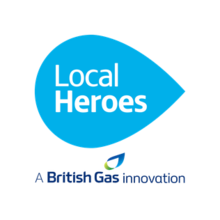
Unpicking “as-a-Service”
Within our work we’re increasingly encountering ‘as-a-Service’ business models, in which traditional products are being transformed into managed services. A model famously held by Rolls-Royce’s 1962 ‘Power-by-the-Hour’ trademark, in which operators are charged per-flight-hour for engines. More recently, ‘Platform-as-a-Service’ (PaaS) models, which facilitate development and sale of multiple solution offerings on a single platform, are facilitating rapid innovation across B2C and B2B.
Anything-as-a-Service (XaaS)
The drive to XaaS often comes from the attractiveness of an ongoing revenue stream and the ability to hold a more strategic customer relationship. Customers benefit through the convenience this service provides and avoid initial capital costs whilst having access to the latest product versions. This simplicity can enable rapid and agile innovation for customers. Adopters of XaaS face challenges integrating legacy systems and managing fundamental culture shifts associated with transitioning to a service model. The pricing, sales and marketing approaches need to be adapted to align with a new approach as the legacy skillsets, channels and strategies will only have limited success.

An interesting example we’ve followed comes from the industrial automation robotics manufacturer, Kuka, which launched its ‘SmartFactory as a Service’ in partnership with MHP and Munich RE in 2018. This enables customers to use scalable and adaptable production capabilities as a service for flexible small-batch manufacturing. This service removes investment costs and risk for customers, enabling quicker and more efficient development cycles.
Platform-as-a-Service (PaaS)
A more recent service model is that of PaaS, based on cloud computing, and involves a central company’s platform that provides the product foundations and environment necessary for software developers to build upon and enhance the original product. PaaS providers gain access to the creativity and assets of others through collaborative working and enable nimble solution development. Significantly, this allows incumbents to work with disruptors rather than against them and mutually benefit from complementing skillsets and assets.
One firm who have made the switch to a PaaS model is the financial technology provider Finastra, who are proud to have ‘evolved from packaged software to micro-services’. In 2018, they launched the cloud-based platform, FusionFabric, which enables third party app and solution developers to collaboratively build upon Finastra’s core system to develop and run apps, which are then accessed by customers through Finastra’s marketplace.

Many of the challenges facing PaaS providers, which include uncertainty around pricing and engaging creators as well as ensuring exclusivity of products, are also faced by other platform models. Local Heroes, a White Space favourite, is an intuitive platform from British Gas that connects people with local tradesmen. The platform is now used by 7,000 tradespeople who have been involved in over 30,000 jobs since its nationwide launch in 2017. White Space were pleased to be involved in helping tackle some of the strategic issues involved.
“The rise of the service model will continue to impact a broad range of traditional industries, such as manufacturing and transport. This is a really exciting transition with the potential to enable quicker innovation in both the B2C and B2B space. There are fascinating challenges that these transitions create and it’s an area we are pleased to be working in”
John Bee – Managing Director, White Space Strategy
To successfully evolve in a service or platform direction, there are three key areas that organisations need to get right:
- Having an appreciation of the internal changes involved and mapping out how different business areas will need to evolve. Difficulties can arise because service and platform models will have different demands of the business, from sales skillsets to product delivery and supply chains
- Understanding what customers are willing to pay for a new service. This can be a difficult issue to tackle, especially for the first movers in an industry. External support may be helpful in building an evidence-backed pricing strategy that gives confidence in the business case
- Meeting both customer needs and contributor needs during development of the proposition and ensuring both groups see added value. It can be easy to focus on the value created for users and fail to create a strategy for engaging contributors or partners
Examples of XaaS in the consumer space have been around for a while and we’re increasingly seeing really interesting examples in the B2B space. At White Space, we enjoy grappling with the challenges and questions that XaaS, PaaS and ‘platformification’ raise and look forward to helping tackle these in the future.
If you’d like to explore the opportunities that using or offering XaaS could present to your business, get in touch
Blog author:

John Bee
Managing Director


